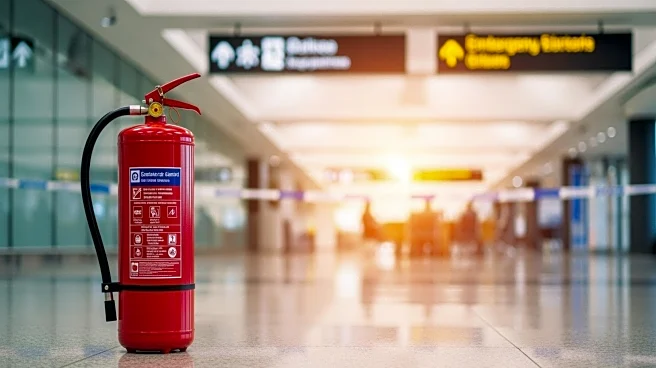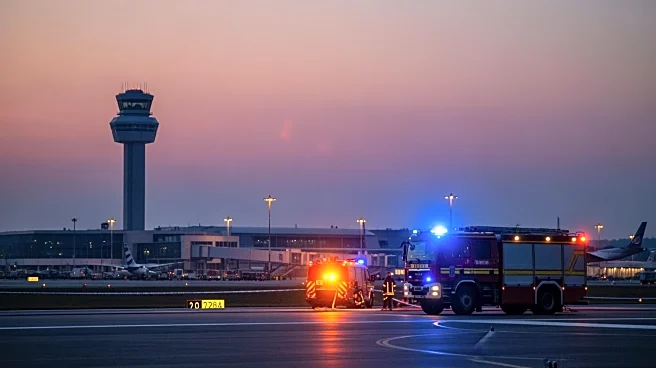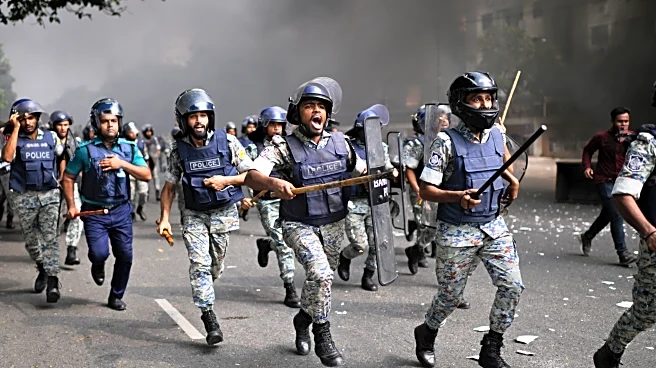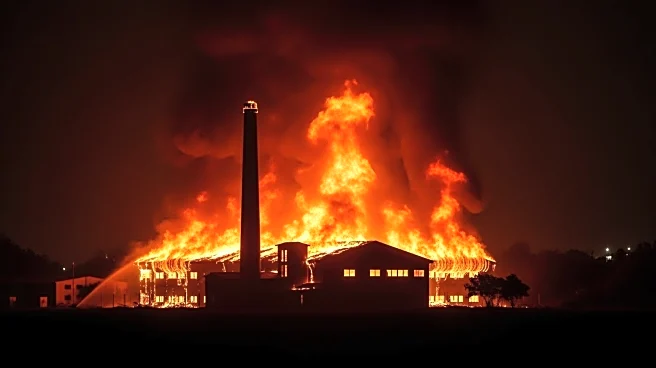What's Happening?
A significant fire broke out at the cargo terminal of Hazrat Shahjalal International Airport in Dhaka, Bangladesh, leading to the suspension of all flights on Saturday. The fire began around 2:30 p.m. local time, producing thick black smoke visible from
miles away. The emergency response involved approximately 36 firefighting units, supported by personnel from the air force, navy, border guards, and army. The fire was contained after about seven hours, allowing flights to resume around 9 p.m. local time. Authorities are currently investigating the cause of the fire and assessing the damage.
Why It's Important?
The suspension of flights at Bangladesh's largest airport due to the fire has significant implications for international travel and logistics. The disruption affects passengers and cargo operations, potentially leading to delays and economic impacts on businesses relying on timely shipments. The incident underscores the importance of emergency preparedness and infrastructure resilience in critical transportation hubs. The involvement of multiple military and emergency services highlights the severity of the situation and the need for coordinated response efforts in such emergencies.
What's Next?
Authorities are conducting investigations to determine the cause of the fire and the extent of the damage. The findings could lead to changes in safety protocols and infrastructure improvements at the airport to prevent future incidents. Airlines and logistics companies may need to adjust schedules and operations to accommodate the disruptions. The incident may prompt discussions on enhancing fire safety measures and emergency response capabilities at airports globally.
Beyond the Headlines
The fire at Hazrat Shahjalal International Airport raises questions about the adequacy of fire safety measures in place at major transportation hubs. It may lead to increased scrutiny and regulatory reviews to ensure that airports are equipped to handle such emergencies effectively. The incident also highlights the interconnectedness of global travel and trade, as disruptions in one location can have ripple effects across international networks.














